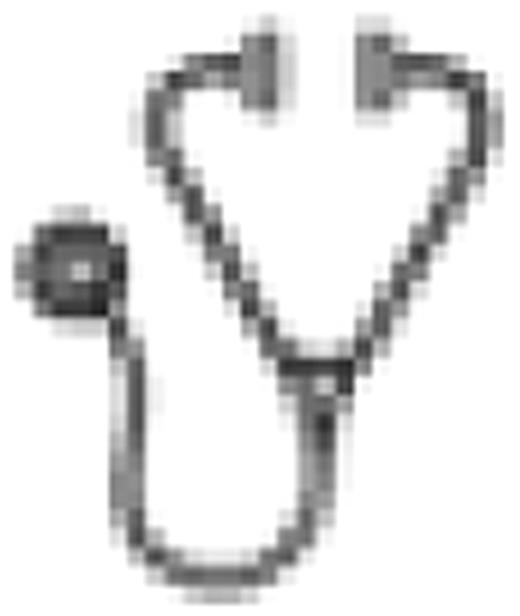Abstract
Identification of a dominant gain-of-function mutation in a JAK2 kinase, JAK2V617, in myeloproliferative diseases such as polycythemia vera (PV) and essential thrombocythemia (ET), provided the foundation for the development of a molecularly targeted therapy for these diseases. Exaggerated JAK2 signaling is believed to play a dominant role in PV and ET by driving unchecked differentiation and proliferation of erythrocyte and thrombocyte precursors. While PV and ET are managed by phlebotomy and/or cytoreductive therapies such as hydroxyurea and anagrelide in the majority of patients, patients who fail these treatments have limited therapeutic options. INCB018424, a potent, selective inhibitor of JAK1 and JAK2, with demonstrated efficacy in MF (PMF, post-PV & post-ET MF), was evaluated for clinical activity in patients refractory to or intolerant of treatment with hydroxyurea.
A phase II trial of INCB018424 is being conducted in advanced PV (n= 34) and ET (n=39) patients. Following an initial phase in which three dose regimens; 10 mg BID, 25 mg BID, and 50 mg QD; were evaluated in each patient population (n=6-8/dose), starting doses of 10 mg BID in PV patients and 25 mg BID in ET patients were chosen based on efficacy and tolerability to explore in an expansion cohort. Dose modifications were allowed to normalize Hct, platelet, and WBC counts. Clinico-hematological response criteria as defined by Barosi et al. (Blood, 2009) were used to assess response. PK and PD data are being collected.
34 patients have completed 3 months of treatment; 20 have completed ≥ six months of treatment. 94% of patients have achieved PR or CR. Greater than 75% of patients have at least 2 of 3 hematological parameters (Hct %, platelet count, WBC count) within normal ranges vs 38% of patients at baseline. Mean Hct% was 46.5 ± 4.3 (mean ± SD) at baseline; 37.5 ± 4.6 at month 3; and 39 ± 3.9 at month 6. Mean WBC count (109/L) was 15.2 ± 10.3 at baseline: 9.8 ± 6.1 at month 3; and 10.4 ± 5.5 at month 6. Mean platelet count (× 109/L) was 553 ± 231 at baseline: 378 ± 158 at month 3; and 311 ± 127 at month 6. 24 patients were phlebotomy-dependent in the 6 months prior to study; all became phlebotomy independent within two weeks of initiating INCB018424. 21 patients had palpable splenomegaly at baseline, ranging from 1 to 21 cm below the costal margin (9.1 ± 5.3 cm). 60% experienced a ≥ 50% reduction in spleen size in the first month which has been sustained over the duration of treatment. In 57% of patients with splenomegaly, spleens became non-palpable. All patients with pruritus (n=26) have experienced rapid, statistically significant, and sustained improvement. Marked improvement was noted in bone pain, night sweats, and fever. AEs of at least Grade 2 severity reported in more than 1 patient were anemia (12%) and thrombocytopenia (6%) all of which were reversible upon dose interruption or modification.
39 patients completed 3 months of treatment; 17 patients have completed ≥ 6 months of treatment; 3 have discontinued. 61% of patients have achieved PR or CR. Greater than 50% of patients have at least 2 of 3 hematological parameters (Hct%, platelet count, WBC count) within normal ranges. Mean platelet counts (× 109/L) were 1059 ± 517 at baseline; 578 ± 435 at month 1; 681.2 ± 250.8 at month 3; and 584.4 ± 151 at month 6. Mean WBC count (× 109/L) was 9.3 ± 5.3 at baseline: 7.4 ± 2.7 at month 3; and 6.9 ± 1.4 at month 6. Of four patients with splenomegaly, all have a > 50% reduction in spleen size. Marked improvement was noted in bone pain, pruritus, weakness, night sweats and abnormal finger sensations. AEs of at least Grade 2 severity reported in more than 1 patient were anemia (18%) and neutropenia (6%) all of which were reversible upon dose interruption or modification.
In PV patients, normalization of hematology parameters with elimination of the need for phlebotomy, marked decreases in splenic volume, and significant effects on symptoms have been demonstrated. Similar changes were noted in ET patients. Given that leukocytosis is an independent risk factor for thrombosis in PV and in ET, the lowering of WBC counts described in this study may be associated with additional clinical benefit along with normalization of Hct% in PV and decreases in platelet counts in ET patients. In this study, INCB018424 is a well tolerated, effective therapy in patients with advanced PV and ET refractory to hydroxyurea treatment.
Verstovsek:AstraZeneca: Research Funding; Exelixis: Research Funding; Incyte: Research Funding; Cephalon: Research Funding; SBIO: Research Funding. Off Label Use: INCB081424 from Incyte, XL019 from Exelixis, AZD1480 from AstraZeneca, CEP701 from Cephalon, SB1518 from SBIO. All ar JAK2 inhibitors and are investigational agents.. Rambaldi:Diasorin S.p.A.: Consultancy, Honoraria. Rosen:Biogen Idec: Membership on an entity's Board of Directors or advisory committees, Speakers Bureau; Southern California Lymphoma Group, Inc.: Membership on an entity's Board of Directors or advisory committees, Speakers Bureau; Genentech: Honoraria, Membership on an entity's Board of Directors or advisory committees, Speakers Bureau; Celgene: Honoraria, Membership on an entity's Board of Directors or advisory committees, Speakers Bureau; Amgen : Honoraria, Membership on an entity's Board of Directors or advisory committees, Speakers Bureau; Tower Cancer Research Foundation: Employment. Levy:Incyte Corporation: Employment, Equity Ownership. Bradley:Incyte Corporation: Employment, Equity Ownership. Schacter:Incyte Corporation: Employment, Equity Ownership. Garrett:Incyte Corporation: Employment. Vaddi:Incyte Corporation: Employment, Equity Ownership. Contel:Incyte Corporation: Employment, Equity Ownership.

This icon denotes an abstract that is clinically relevant.
Author notes
Asterisk with author names denotes non-ASH members.

This feature is available to Subscribers Only
Sign In or Create an Account Close Modal